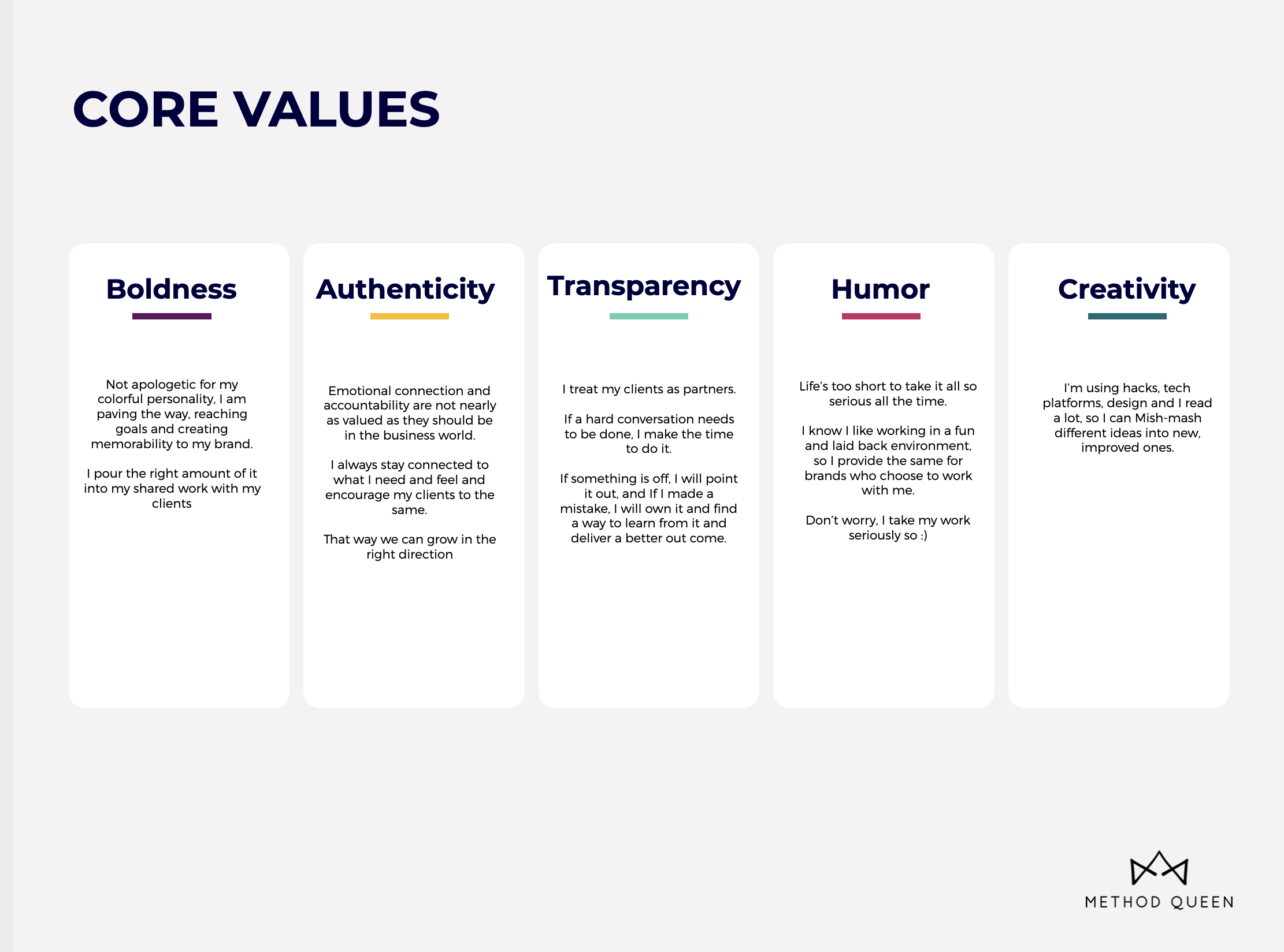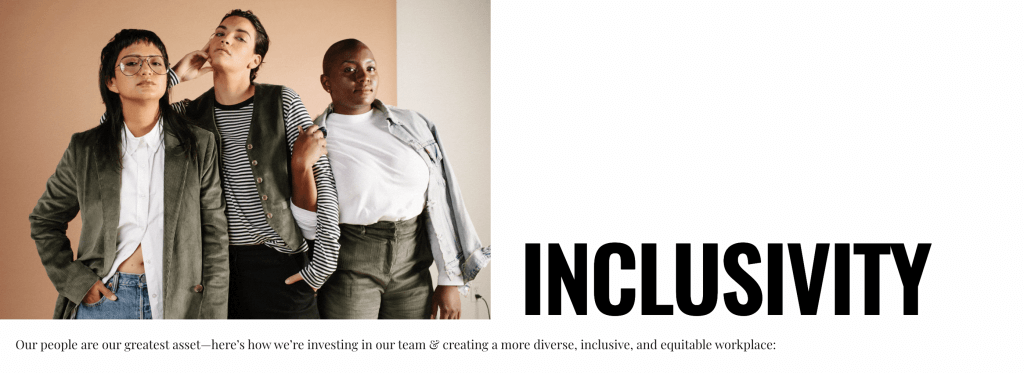More great examples of business storytelling

A good brand story is one that makes the audience feel more connected to the use of the products or services that the business offers. And we can all create one. To provide good examples of business storytelling, I’ve gathered brands that we all know and some less familiar ones. But what sets them all apart is that they have clear values that guide and connect their audience.
If you’ve read my stuff before, you know I’m all about how storytelling rocks as a marketing tool. It’s the secret sauce to create brands that people adore and really vibe with. Trust? Well, that’s where storytelling lays down the groundwork. Everything else just sprouts from there. Sure, there are already articles on good storytelling and a whole breakdown of business storytelling, but I felt like throwing in my two cents.
Examples from the world of business storytelling
When I whip up brand stories for the businesses I roll with, it’s not just about slapping together values, vision, mission, and some cool narratives. It’s about creating tales that stick, that click with the audience.
One cool perk of brand storytelling? It’s a game-changer. Helps your business stand out in a sea of competitors. There are loads of storytelling tricks to amp up your marketing game.
Had a chat this week with a potential client, a player in the insurance game. The manager was all, “Hey, everyone’s dishing out the same info, same options. Why bother with brand storytelling? Won’t change a thing.”
I get it, basics are the same. But here’s the twist.
Remember those cakes from childhood? Basic, right? Now, picture this – slice it in half, stack ’em with cream in the middle, top it with frosting, zigzag it with tasty stuff, toss in a few Oreos, and scribble the birthday kid’s name. Which one’s calling your name? Which one’s the showstopper?
See, the base is standard. No changing or inventing info.
But how you dish it out? That’s the game-changer. It’s what makes it stick, interesting, and an experience.
If you’re a business owner, you’re probably swimming in a sea of competition. Everyone’s dishing out more or less the same stuff. Your brand story is your superhero cape. It talks right to your people, gives your business a personality that stands out in the crowd. Make it catchy, make it a part of what people think about your brand. That’s where the real magic happens.
When a business spills its story, it’s like inviting customers to a backstage tour. Builds authenticity and transparency, the VIPs in building trust.
Business storytelling? It’s like Cupid’s arrow for creating an emotional bond with customers. Emotional bond equals a purchase – the fancy way of saying “I trust you and need what you’ve got.” People are like magnets for stories, and a killer brand story? It’s not a luxury, it’s a must-have.
Here are some examples of brands that started small and became excellent examples of business storytelling.
#1 Patagonia
I came across Patagonia for the first time in Argentina back in ’08 when I snagged one of their thermal jackets for snowy mountain adventures. Being Israeli, I had zero clue about this company, but my American pals I was with couldn’t agree on Patagonia or North Face.
Turns out, Patagonia is a big deal in outdoor and extreme sports gear, all about rocking sustainable vibes. Their story? Simple mission: “build the best product, do zero unnecessary harm, and use business to tackle the environmental crisis.” And this mission? It’s not just words; it’s in every bit of their brand, from how they design products to their flashy marketing moves.
Their storytelling game is strong, focusing on being eco-friendly and socially responsible. That vibe clicks big time with a crowd mostly from the West, all about saving the planet and fixing consumerism issues. They spill these stories on their website, socials, and even in-store setups. It’s all about sharing tales of sustainability and how their gear rocks in the great outdoors – hiking, surfing, you name it.
Patagonia doesn’t just talk the talk; they walk the walk. Their corporate responsibility tale is no joke. They dive into events and campaigns, fighting the good fight for the environment and shouting loud about Earth protection.
So, yeah, Patagonia isn’t just a brand; it’s a lifestyle, a commitment, and a trusty partner for your wildest adventures.
#2 TOMS
TOMS is like my go-to example because when I was in the States, I was kinda obsessed with their shoes. You’ve probably heard of their “One for One” thing – buy a pair, they give a pair to a kid who needs it somewhere in the world. Cool, right? I’ve personally chipped in for 9 pairs through this gig. What hooked me? It made me feel good about myself. So, every time, I went for TOMS, even though I had other options. It’s a tale that taps into our desire to be better and lend a hand.
TOMS nailed it with their simple yet kickass storytelling, creating a fan club and becoming a big deal in the socially conscious consumer scene.
Check out their website and socials – loaded with stories from happy customers and the feels they got, mixed with tales of kids getting those donated shoes. African kids walking to school barefoot? Not anymore. South American forest adventures? Now with protected feet.
TOMS goes all out with their marketing and events, dropping these stories and cranking up the emotional connection between us and the brand. And let me tell you, it hits home big time.
#3 Warby Parker
Warby Parker is all about making glasses cool, affordable, and just a click away. Jump on their website, and boom, you can try out 5 frames right from your couch. Kind of like TOMS, they not only dish out quality eyewear without breaking the bank but also run a “Buy a Pair, Give a Pair” deal. Snag a pair, and they donate one. This story? It’s what sets them apart and brings in the loyal fans.
They’re not just about glasses; they’re into making them eco-friendly too. On top of that, Warby Parker teams up with nonprofits, showing off their efforts on their website and socials. And trust me, their visual storytelling game is strong – pics and videos that shout out their eyewear and its vibe with people, cultures, and communities.
Unlike TOMS, Warby Parker goes for close-knit vibes. They’re all about helping out the local crew, being “neighbors” rather than sending aid to kids in far-off lands.
#4 Airbnb
Not every brand story has to be all about giving back and community vibes, right? Business storytelling can be pretty powerful when it’s all about the experience it gives us, the consumers.
As a digital nomad, I’m all about using Airbnb to set up my routine wherever I go.
Airbnb is this awesome vacation rental company known for its cool approach to hospitality. Instead of just booking a regular hotel, with Airbnb, I get to crash in someone’s home or apartment, making my travel feel way more authentic and immersive.
This whole vibe helped Airbnb stand out from the competition and appealed to folks like me who wanted a more personal travel experience, without breaking the bank on fancy hotels. Suddenly, people from all over the world were opening up their homes while they were away, making travel cheaper and more real for everyone.
But, I’ve gotta admit, lately, things have changed a bit. Some people have started using Airbnb as a money-making scheme, buying up properties and renting them out at crazy high prices. So, that super authentic experience isn’t always guaranteed anymore. It’s a bummer, but hey, I still choose Airbnb for all the unique experiences it offers. I mean, where else can you sleep in a castle, a treehouse, or even on a boat?
Their story has evolved from just being about cozy apartments to creating these unforgettable experiences.
And you know what? It’s still a story I trust.
Check out the options for experiences in the icon menu. You can actually search for a castle!
#5 “Wildfang”
So, there’s this awesome feminist clothing brand called Wildfang, and it’s not just about fashion – it’s a whole vibe.
Wildfang’s business storytelling focuses on the idea of being a “fashion rebel” and challenging traditional gender norms through fashion. They offer clothing and accessories designed for women but inspired by men’s fashion. On the store’s website and social media platforms, you’ll find stories and photos of real women wearing their fashion, embracing the aesthetics and values of Wildfang.
If you search up their website or socials, you’ll see real women rocking their gear, fully embracing the Wildfang look and values. And what are those values? They’re all about building a community of strong, confident, empowered women who aren’t afraid to do things their own way. Plus, they use their platform to shout out and support feminist organizations like ACLU and Planned Parenthood. Oh, and they’re big on sustainability and fair labor practices, using eco-friendly materials and treating their workers right.
Honestly, that’s why I’d rather spend a bit more on Wildfang than hit up Zara. It’s not just about the clothes; it’s about supporting a brand that stands for something bigger.
And this is essentially the essence of a strong brand story. It provides us with the rationale for why it’s worth purchasing a more expensive product than similar ones on the market. This is usually expressed through emotions and the values we connect with.
By the way, can we just take a moment to appreciate that I wrote this whole thing about brand storytelling without even mentioning Apple?
Yep, still in my own league.











